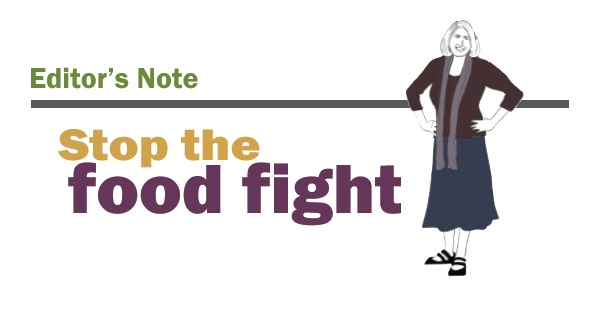
Supporting a healthy, clean food system used to be simple: Go organic. Then along came an even simpler cry: Go non-GMO. This gained steam because one face—one big bad business—took to bullying the little guy.
Organic used to be about that little guy, about the clean production of food. Then big production and big government became the story and organic became more difficult to understand. Add to this disparate movements such as “better than organic” and popular and opposing diet preferences, and general debate and confusion grows.
In the October issue of Natural Foods Merchandiser, we explore the rising tensions among non-GMO and organic movements and how they and the movement to define “natural” intersect, often on the retail floor.
But the debate about our food system is much larger than these two labels. A multitude of ways of eating purporting to be the way have become a party to the food fight. We have vegan, vegetarian, Paleo, low carb, raw, juicers, cleansers and just plain clean eaters, among so many others and variations within. Why does it have to be one vs. another? How do we advance the discussion about improving our health without getting mired in politics and division?
Unfortunately all of these “better than” and “I’m right” attitudes divide rather than unite. Instead, we have individuals suing over the use of the word natural; we have associations at standstills; and we have movements feeling left behind.
Advancing natural foods issues just might take courts and government, some say, to create a base on which to build better discussion and improved systems. Others believe self-policing—by industry or by individual—is the only way.

Let's discuss in the comments below:
How do you advance these conversations in your store?
The answer likely lies in the middle, because we know court rule rarely results in good rules. And we know government has a way of adding unnecessary cost and complexity. But we also know collaboration often occurs only by necessity.
In reality, all of these movements are more alike than most would like to think as every participant is seeking a healthy way of eating sans additives, GMOs and pesticides. All are seeking a natural way of eating that makes them feel their best. We can all get on board with that.
I say forget the politicians, forget the food bloggers, forget the big food companies, it’s up to the independent natural foods retailer to advance this conversation, while respecting diversity and understanding that freedom of choice leads to what’s best for each individual.
The power of one, the power of community, starts in the aisles of your stores. Natural foods retailers have always been on the forefront of making dramatic changes in communities and on state and national levels. We include a couple of them in our October issue. On the cover, we have John Wood, whose small action at his Green Grocer store went big on the Web, resulting in Kashi vowing to change its products. We also have Mark Squire, a California storeowner who has led a national effort on the GMO labeling front and the state’s Proposition 37 effort as well.
So many similar stories go unnoticed every day in every city across this nation. But together, great impact is occurring. And together we can advance the conversation around natural, non-GMO, organic, diets of all sorts and whatever may come next.
About the Author(s)
You May Also Like




